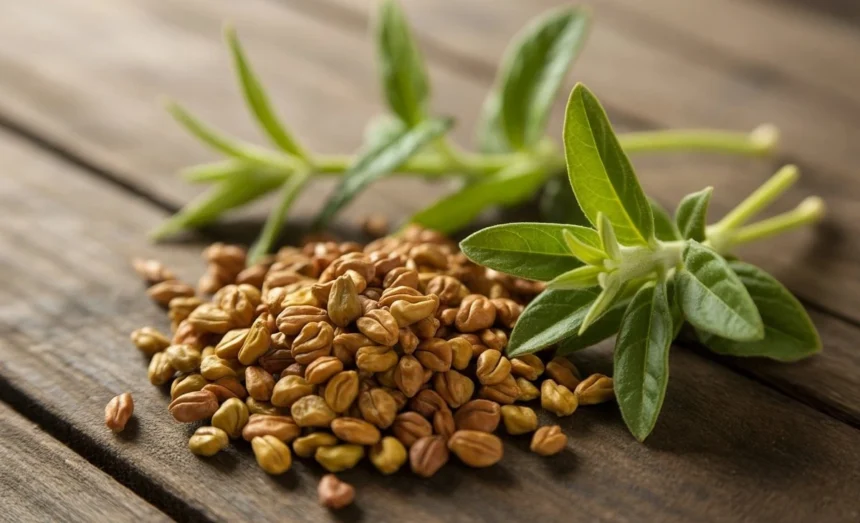Foenegriek, commonly known as fenugreek, is not just an intriguing name; it’s a spice steeped in rich history and bursting with flavor. As culinary enthusiasts and health-conscious individuals seek out natural ingredients to enhance their dishes and well-being, foenegriek is stepping back into the spotlight. This ancient spice has been used for centuries across various cultures, prized for its distinctive taste and numerous benefits. Today, we’ll explore what makes foenegriek so special—its fascinating past, impressive health properties, versatile culinary uses—and why you should consider adding this remarkable ingredient to your pantry. Let’s dive into the world of foenegriek!
History and Cultural Significance of Foenegriek
Foenegriek, also known as fenugreek, has a rich history that dates back thousands of years. This ancient spice finds its roots in the Mediterranean and parts of Asia. It was highly valued by the Egyptians, who used it in mummification processes and as an offering to their gods.
In Indian culture, Foenegriek holds a significant place in culinary traditions. Its use can be traced through Ayurvedic practices where it’s believed to promote health and well-being. The spice is often associated with fertility and prosperity.
Throughout history, Foenegriek has transcended borders. Traders carried it along trade routes, spreading its popularity across different civilizations. Ancient Greeks employed the herb for various medicinal purposes while Romans celebrated its flavor in sauces and dishes.
Its distinct aroma continues to evoke nostalgia for many cultures today, reminding us of generations past who cherished this remarkable spice.
Health Benefits of Foenegriek
Foenegriek, also known as fenugreek, has been celebrated for centuries due to its impressive health benefits. This ancient spice is packed with essential nutrients and bioactive compounds that can improve overall wellness.
Rich in fiber, Foenegriek aids digestion and helps regulate blood sugar levels. It’s particularly beneficial for those managing diabetes. Its natural anti-inflammatory properties also promote heart health by reducing cholesterol levels.
Moreover, Foenegriek promotes hormonal balance in women. It’s often used to alleviate menstrual discomfort and enhance lactation during breastfeeding.
Packed with antioxidants, this spice may support immune function as well. Incorporating it into your diet could bolster your body’s defenses against illness.
Whether you sprinkle it on meals or enjoy it in tea, adding Foenegriek offers a simple way to tap into nature’s pharmacy for better health outcomes.
Culinary Uses and Recipes with Foenegriek
Foenegriek, commonly known as fenugreek, is a versatile ingredient that can elevate various dishes. Its unique flavor adds depth to both savory and sweet recipes.
In Indian cuisine, it’s often used in curries and dals. The seeds are typically roasted for a nuttier taste, enhancing the overall aroma of the dish.
You can also sprinkle ground foenegriek into bread dough or pancakes for an intriguing twist. It pairs beautifully with honey in desserts, creating an unexpected yet delightful combination.
For those who enjoy healthy smoothies, adding a teaspoon of powdered foenegriek can boost nutritional value without overpowering other flavors.
To explore its benefits further, consider making a simple tea by steeping fresh leaves or seeds in hot water. This comforting drink offers warmth along with health perks while showcasing foenegriek’s distinct character.
Foenegriek in Traditional Medicine
Foenegriek, known as fenugreek in many parts of the world, has long been a staple in traditional medicine. Its seeds are rich in compounds that have caught the attention of herbalists for centuries.
Practitioners often use foenegriek to support digestive health. The soluble fiber found in its seeds aids digestion and helps alleviate issues like bloating or gas.
In various cultures, it’s also considered beneficial for women’s health. Some traditional remedies suggest using foenegriek to ease menstrual discomfort and promote lactation among nursing mothers.
Moreover, this ancient spice is believed to help regulate blood sugar levels. Many traditions include it as part of holistic approaches aimed at managing diabetes.
Its anti-inflammatory properties make it a go-to ingredient for soothing aches and promoting overall wellness. With such diverse applications, foenegriek continues to hold an esteemed place in natural healing practices around the globe.
The Modern Resurgence of Foenegriek
Foenegriek is experiencing a revival in today’s culinary landscape. Once a staple in ancient kitchens, it’s now capturing the attention of food enthusiasts and health-conscious individuals alike.
Social media platforms are filled with vibrant recipes showcasing this unique spice. Chefs are experimenting with its nutty flavor, incorporating it into everything from smoothies to gourmet dishes. The versatility adds depth to meals while promoting wellness.
Health trends also play a crucial role in foenegriek’s comeback. With growing awareness around natural remedies, people are turning to this ancient spice for its numerous benefits. It fits seamlessly into various diets—whether vegan or gluten-free.
Moreover, farmers markets feature foenegriek more prominently than ever before. Local producers take pride in cultivating this powerful herb, catering to an audience eager for authenticity and nutrition.
As interest continues to rise, foenegriek is not just surviving; it’s thriving and redefining modern cooking experiences across the globe.
Conclusion: Why You Should Incorporate Foenegriek into Your Diet
Incorporating foenegriek into your diet can open up a world of flavors and health benefits. This ancient spice, with its rich history and cultural significance, is making waves in modern cuisine. Whether you sprinkle it on your dishes or brew it as a tea, foenegriek adds depth to your meals.
Its numerous health advantages range from aiding digestion to enhancing lactation for nursing mothers. Plus, it’s versatile enough to fit seamlessly into various recipes—from savory curries to sweet desserts.
As interest in holistic health grows, so does the appreciation for traditional ingredients like foenegriek. Embracing this spice not only connects you with age-old culinary practices but also enhances your overall well-being.
So why not give foenegriek a chance? Experiment with this dynamic ingredient in your kitchen and experience the benefits firsthand. It’s time to rediscover what our ancestors knew all along—the power of nature’s bounty is truly remarkable.






